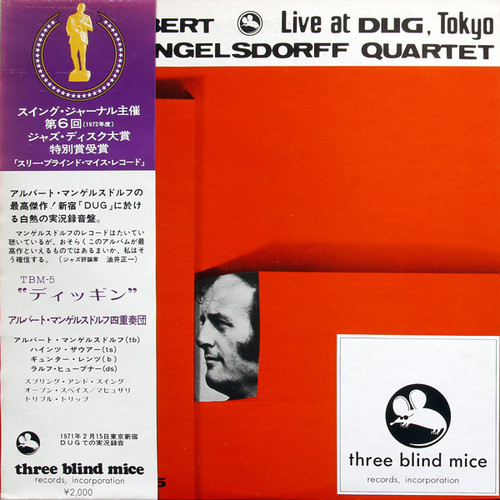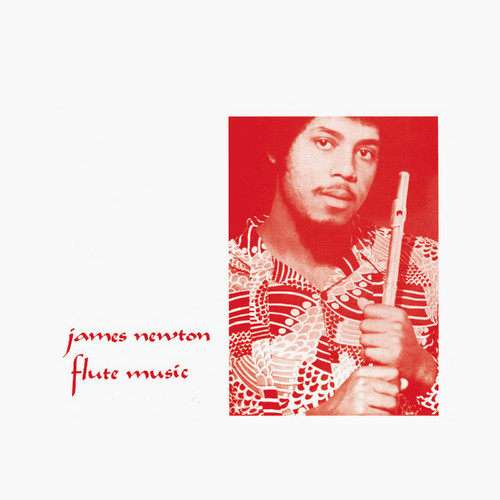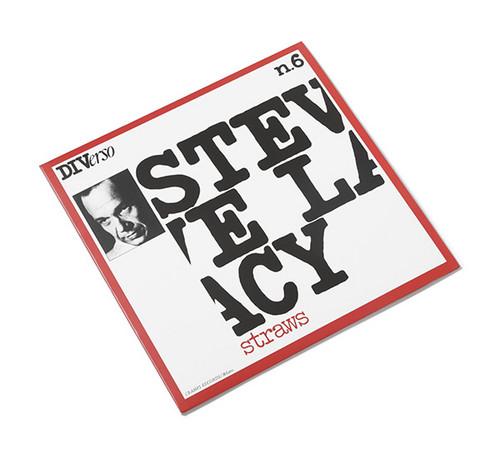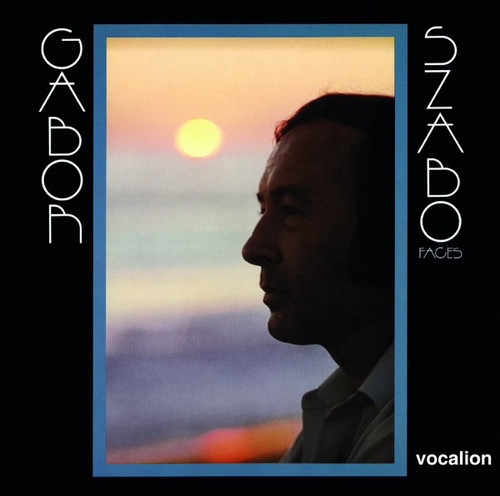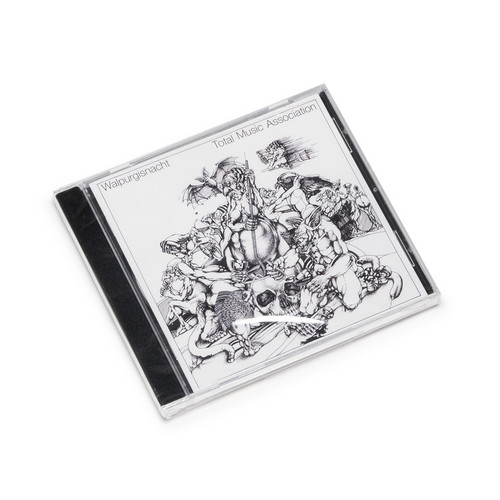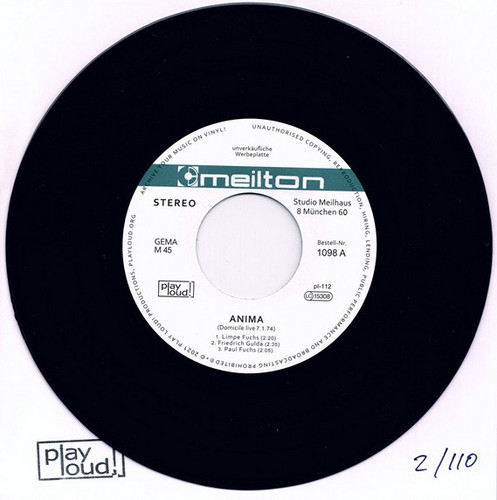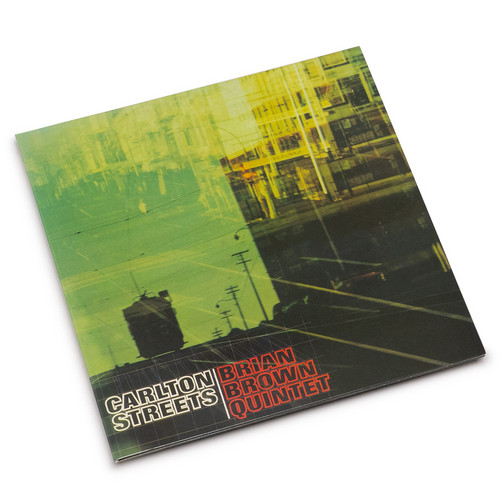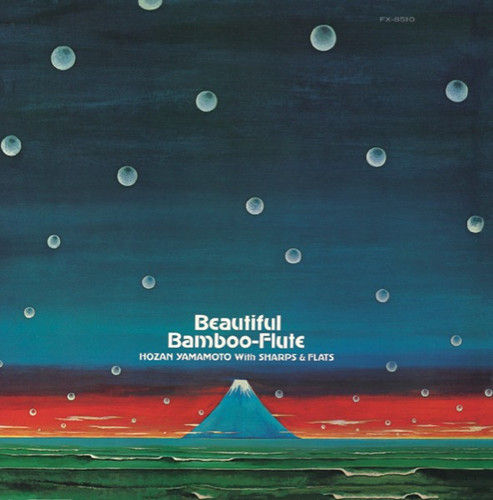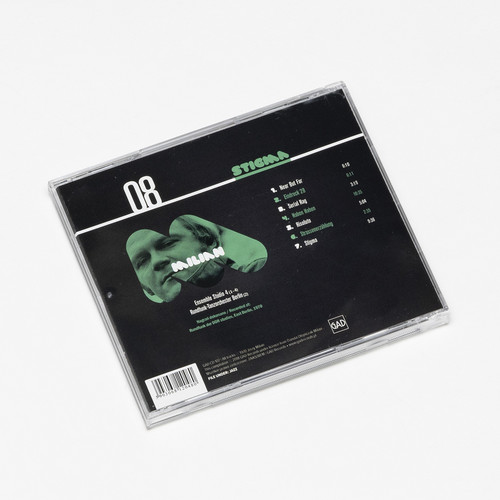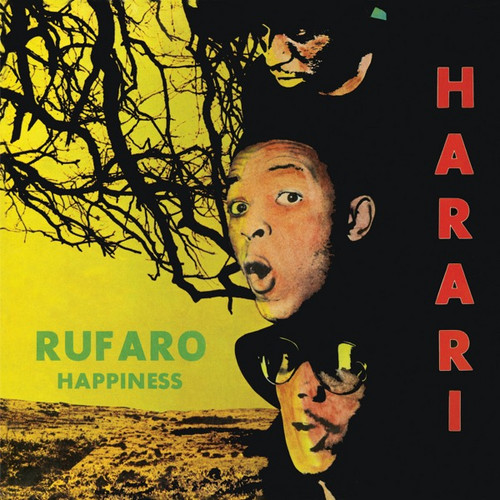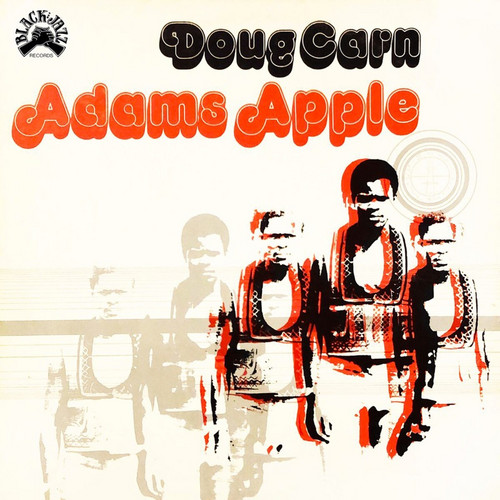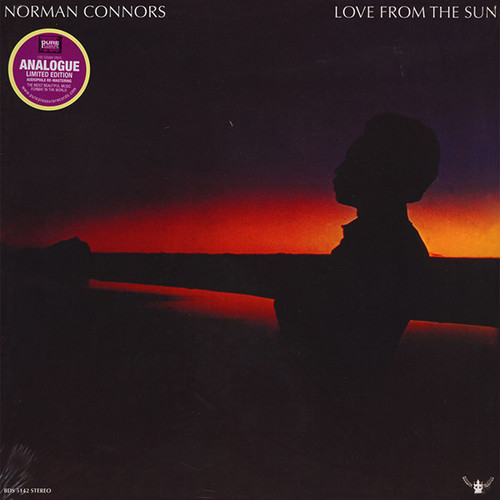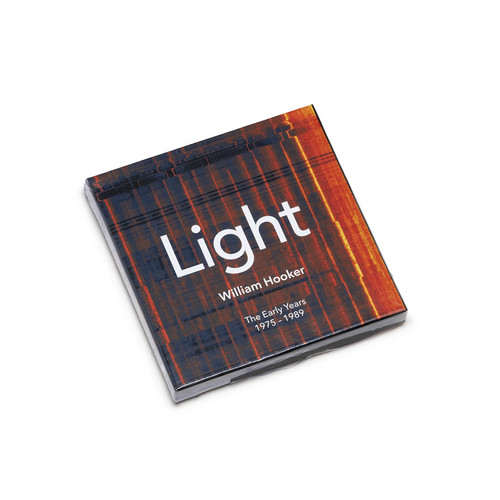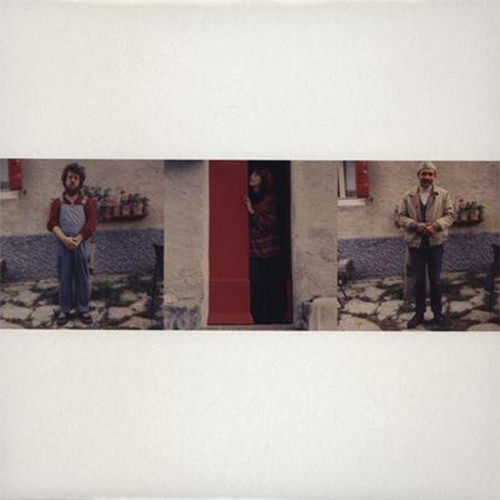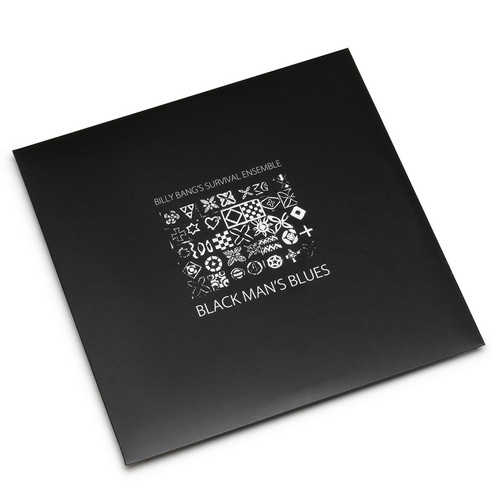Jazz /
Solos, Volume 2
Joachim Kühn (piano & piano électrique). Solos, vol. 2 (Inédit). Recorded 19th march 1971 at studio Europasonor Paris.
Diggin'
"The master of multiphonics (playing more than one note at a time on a horn), Albert Mangelsdorff has been a giant of the European avant-garde for the past 30 years. He originally studied violin and worked as a jazz guitarist before taking up the trombone in 1948. Here he is taped live at a concert in Tokyo with what was then his regular quartet: Heinz Sauer on sax, Günter Lenz on bass, and Ralf Hübner on drums. There's a very nice blend between the leader's agile but smooth horn and the somewha…
Flute Music
James Newton’s 1977 self-released solo-debut, ‘Flute Music’ is an unheralded gem of the 70’s jazz underground. An album that showcases a diverse range of styles and fervent cross-pollination, while retaining a clear sense of direction and cohesion. An artist funnelling their wild expression into multiple facets of “The New Music”, crafting an auspicious and artistic debut. Newton would later go on to record with revered jazz labels like India Navigation and ECM, and collaborate with fellow creat…
Straws (LP)
At long last, after remaining out of print for decades, the Milan based imprint, Dialogo, dives into the legendary catalog of Cramps, bringing forth the first ever vinyl reissue of Steve Lacy’s LP, "Straws", issued as the sixth instalment of the label’s DIVerso series in 1977. Truly singular in the legendary American saxophonist’s discography - featuring stunning solo excursions and dialogs with himself - it remains one of the great documents of 1970s improvisation, and is as engrossing, creativ…
Faces (1977) & Bonus Tracks
Gabor Szabo's Faces, recorded for Mercury in 1977, is a distinctly jazz-fusion album. It was produced by trombonist and former Crusaders member Wayne Henderson, with the rhythm section coming from the soul-jazz-funk band Pleasure, with whom Henderson was working for the Fantasy label at the time. Built on gripping rough funk grooves, the music leaves plenty of room for Szabó's elegant guitar lines and meticulously constructed solos. The album, which was rather neglected when it was released, can…
Walpurgisnacht
NoBusiness Records presents Walpurgisnacht by Total Music Association. Transferred and remastered from the original tape. Tape transfer by Wolfgang Obrecht at Tonstudio RichArt, Munich. Original Cover Design by Manfred Vogel. Design by Oskaras Anosovas. Remastered by Arūnas Zujus at MAMAstudios. Photography of the musicians by Konstanze Vollmer. Produced by Danas Mikailionis and Ernst Nebhuth. Co-producer - Valerij Anosov. Liner Notes by Hans-Jörg Hussong / Liner Notes (translation) - Ernst Nebh…
Domicile live 7.1.74
** Special Edition of 110 hand-numbered copies ** Avant-garde. Paul and Limpe Fuchs and Friedrich Gulda performed live at the famous Munich jazz club Domicile on July 1, 1974. There are three tracks on side 1 featuring and named for each of the musicians. Side 2 is titled “Ensemble”. The original record was given away for free at concerts and was limited to 80 copies. play loud! re-releases this original EP for the first time ever. 110 7” vinyl copies, hand-numbered. Digital on all known platfor…
Carlton Streets
Composer and saxophonist Brian Brown produced some of the most refined Australian jazz recordings during the 1970s. A versatile musician whose distinct impressionist music melded modern jazz with the outer limits of free experimentation. Considered to be his greatest work was the 1975 concept album Carlton Streets, an ambitious recording that romanticised the sights, sounds and the nostalgia of this once-bohemian Melbourne neighbourhood. Differing from his eco-jazz composition Wildflowers heard …
Beautiful Bamboo-Flute
** In process of stocking ** Seminal Japanese jazz album from 1971. Journeys through jazz fusion, soul and big band moods. Impossible to obtain in its original format, these days. Hozan Yamamoto was recognised as a "living national treasure" by the Japanese government in 2002. This highly sought-after album from the Japanese wood flute player is more upbeat and swinging than some of his other records. The big band he recorded this album with (Sharps & Flats) played a big part in the genesis of t…
Stigma
When in 1970 Jerzy Milian was developing his regular cooperation with the Berlin radio, which was launched a few months earlier by recording music for the television ballet “Rivalen”, he was at the peak of his creative possibilities. He could boast of three years of success with his own trio, along with cooperation with Gustav Brom and an ongoing adventure with the Belgian big band BRT. He also had an abundance of ideas and energy that could be devoted not to one, but two projects. In July 1970,…
Rufaro
The Beaters – Harari was released in 1975. After changing their name, Harari went into the studio late in 1976 to record their follow-up, Rufaro / Happiness. In 1976 they were voted South Africa’s top instrumental group and were in high demand at concert venues across the country. Comprising former schoolmates guitarist and singer Selby Ntuli, bassist Alec Khaoli, lead guitarist Monty Ndimande and drummer Sipho Mabuse, the group had come a long way from playing American-styled instrumental soul …
Adams Apple
Originally released in 1974, Doug Carn's final album for the Black Jazz label, and a set that pushes even farther than his previous efforts! Jean Carn isn't in the group this time around, but the set does feature a totally great twin-vocal approach – with singing by Joyce Green and John Conner, blending their voices together in a style that's right up there with the most righteous 70s jazz experiments by Horace Silver or Billy Gault! This vocal balance really brings a new sort of power to Carn's…
Love from the Sun
This jazz recording is considered as the 'magnum opus' of master "drummer extraordinaire'', composer, arranger, producer, and leader Norman Connor's in a career that has spanned 4 decades. This recording is what many will consider the debut of the legendary vocalist Dee Dee Bridgewater who has since gone on to a brilliant career. Connor's put together an all-star group with Herbie Hancock and Onaje Allan Gumbs on piano and Fender Rhodes, Dr. Eddie Henderson on trumpet/flugelhorn, Carlos Garnett …
Light The Early Years 1975 - 1989
NoBusiness Records is pleased to announce a new archive release from it’s series of important musicians and group recordings from the 70s and 80s, which either were never released before or released on small private labels but long out of print and now newly remastered.This release is dedicated to William Hooker’s early music and covers his most important works during the period from 1975 to 1989. Newly remastered material is now presented in a 4 CD boxed set.
William Hooker is an artistic whol…
Archi
Issued for an art event recently presented at the Galleria Milano in the first week of April 2012, the recordings on this LP edition represent a very specific and intimate moment in the creative sound production of Davide Mosconi with NADMA associates Inez Klok and Gustavo Bonora.For Davide Mosconi and for all the artists and musicians involved in the groups he founded (the legendary NADMA, Organic Archestra, Il Quartetto, Alea), improvising sessions were a daily practice that founded their very…
Black Man's Blues
Recorded 29th May 1977 at A Day in Solidarity with Soweto: A Fund Raiser, Harlem Fight-Back, 1 East 125th St., New York Violinist Billy Bang made his recording debut as a leader with the Survival Ensemble, the first working band he ever led, on New York Collage in 1979. Bang, saxophonists Bilal Abdur Rahman and Henry Warner, bassist William Parker, and percussionists Rashid Bakr and Khuwana John Fuller played incendiary free jazz more clearly indebted to the New York avant-garde of the precedin…

